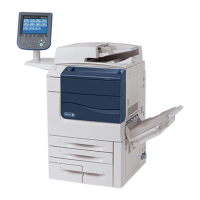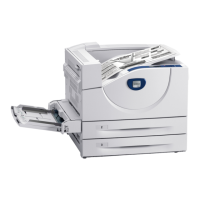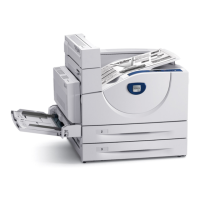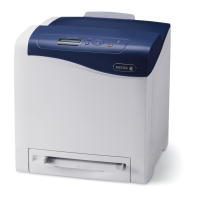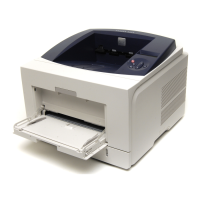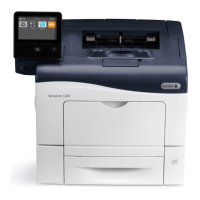reference
address field
of
the
instruction
is
used to
obtain
a word,
and
the 17 or 20
low-order
bits
of
the
word thus
obtained
effectively
replace
the
initial
ref-
erence
address field; then indexing
is
carried
out
ac-
cording to the
operation
code
of
the
instruction.
See
Figures 7
and
9,
later
in this
chapter.
6.
Index Reference Address.
If
indexing
is
called
for in
the
instruction
(a
value
other
than
zero
in bits
12-14
of
the
instruction),
the
direct
or
indirect
reference
ad-
dress
is
modified by
addition
of
the
displacement
value
in
the
general
register (index)
called
for by
the
instruc-
tion (after
scaling
the
displacement
according
to
the
instruction
type).
This final
reference
address
value
(after
indirect
addressing,
indexing,
or both)
is
defined
as
the
effective
virtual address of
the
instruction.
In-
dexing
after
indirect
addressing
is
,ca lied
postindexing.
See
also
Figures 7 and
9,
later
in this
chapter.
7.
Displacements. Displacements
are
the
16-
to
22-bit
values used in index registers
and
by
byte-string
in-
structions to
generate
effective
addresses
of
the
appro-
priate
size
(byte, halfword, word, or doubleword).
8.
Register Address.
If
any
instruction provides a virtual
address
that
is
a memory
reference
(i
.e.,
a
direct,
indirect,
or indexed
reference
address) in
the
range 0
through 15,
the
basic processor does not
attempt
to read
from
or
write
into main memory locations 0 through
15.
Instead, the four low-order bits
of
the
reference
ad-
dress
are
used as a
general
register address and
the
gen-
era
I reg ister correspond i
ng
to th
is
address
is
used as the
operand
location
or result
destination.
Thus,
the
in-
struction
can
use
any
of
the
first
16
registers in
the
cur-
renT
regisTer biocK
as
Tne
source
or
an
operand,
the
location
of
a
direct
address, or
the
destination
of
a
re-
sult.
Such usage
is
called
a
"register-to-register"
operation.
9.
Actual Address. This
is
the address
value
actually
used
by the basic processor to
access
main memory via
the
memory address register (see Figure
5).
If
the
effective
virtual address
is
in the range 0 through
15
(X10
through
X'F
'
),
one
of
the first
16
general
registers in
the
cur-
rent register
block
is
being
addressed.
If
the
basic
pro-
cessor
is
operating
in
the
virtual addressing mode,
all
addresses
grea
ter than
15
(X
1 F I)
are
transformed (usua IIy
into
addresses in a
different
memory page) by the mem-
ory map into
actual
addresses.
Contrarily,
if
the
basic
processor
is
operating
in
either
real or real
extended
mode,
no
transformation via
the
memory map takes
place.
10.
Effective Address. The
effective
address
is
defined
as
the
final virtual address computed for
an
instruction.
Note,
however,
that
some instructions do not use
the
effective
address as a
location
reference;
instead,
the
effective
address
is
used to control the
operation
of
the
instruction
(as
in a shift instruction), to
designate
the
address of
an
input/output
device
(as in
an
input/
output
instruction), or to
designate
a
specific
element
of
the
system (as in a
READ
DIRECT
or
WRITE
DIRECT
instruction) •
11.
Effective Location.
An
effective
location
is
defined
as the
actual
location
(in main memory
or
in the
current
register block)
that
is
to
receive
the result of a memory-
referencing
instruction,
and
is
referenced
by means
of
an
effective
address.
Because an
effective
address
may be
either
an
actual
address or a virtual address,
when
applicable,
this
definition
of
an
effective
loca-
tion assumes
the
transformation
of
a virtual address
into
an
actual
address.
12.
Effective
Operand.
An
effective
operand
is
defined
as
the
contents
of
an
actual
location
(in main memory
or in
the
current
register
block)
that
is
to be used as
an
operand by a
memory-referencing
instruction,
and
is
referred to by means
of
an
effective
address. This
also presupposes the transformation
of
a virtual address
into
an
actual
address.
TYPES
OF
ADDRESSING
Except for
the
special
type
of
addressing performed by some
interrupt
and
trap instructi ons,
all
addressing
within
the
computer system
is
real,
real
extended,
or
virtual.
REAL
ADDRESSING
In
real addressing, a
one-to-one
relationship prevails
be-
tween
the
effective
virtual
address of
each
instruction
and
the
actual
address used to
access
main memory. Real
addressing has these
characteristics:
1.
Each
reference
address
is
a
17-bit
word address.
2.
The
reference
address may
be
direct
or
indirect,
with
or
without
postindexing.
3.
Displacements
associated
with indexing
are
automati-
cally
aligned,
as
required,
using
the
full
32-bit
contents
of
the
index
register.
The final result
is
truncated
to
the
left
of
the
high-order
bit
of
the original
17-bit
ref-
erence
address,
and
the
effective
real address
is
a
16-bit
doubleword address,
17-bit
word address,
18-bit
halfword address, or a
19-bit
byte
address.
4.
If
indirect
addressing
is
invoked,
the
17-bit
reference
address in
the
instruction word
is
used to
access
the
in-
direct
address word in memory. The
low-order
17
bits
of
this word then
replace
the
reference
address
of
the
instruction word in
the
calculations
described in (3),
above.
5.
Memory mapping
and
memory
access
protection
are
never
invoked.
6.
Memory
write
protection
is
automatically
invoked.
7.
Leading zeros
are
automatically
appended
to the
effec-
tive
address to
generate
an
actual
word address as
re-
quired
by
the
main memory.
Main Memory 19

